Abstract
OBJECTIVE: A clinical study was undertaken to define optimal preoperative strategies and intraoperative techniques that would result in the least morbidity and maximum physiologic improvements in patients with end-stage emphysema selected for lung volume reduction surgery. BACKGROUND: Lung volume reduction surgery recently has been advocated as an alternative or a bridge to lung transplantation for patients with end-stage chronic obstructive pulmonary disease. The risks, benefits, and long-term results have not been clarified. METHODS: Twenty-six patients underwent lung volume reduction surgery with a 3-month follow-up on 17 patients. Preoperative and postoperative changes in pulmonary function parameters, quality of life, and oxygen requirement were analyzed. The value of preoperative localization of diseased lung segments and how this affects intraoperative resection is addressed. RESULTS: Forty-nine percent improvement in FEV1 (forced expiratory volume in 1 second) and 23% improvement in FVC (forced vital capacity) were seen after lung volume reduction surgery. Supplemental oxygen requirement was decreased and 79% of patients reported a much better quality of life. Mortality was 3.8% and air leak morbidity was 18%. CONCLUSIONS: Lung volume reduction surgery can predictably improve objective and subjective pulmonary function in selected patients with end-stage emphysema with low morbidity and mortality. Careful patient selection, accurate preoperative localization of diseased target areas, skilled anesthetic technique, meticulous operative approach, and intense postoperative support are essential to achieve favorable results.
Full text
PDF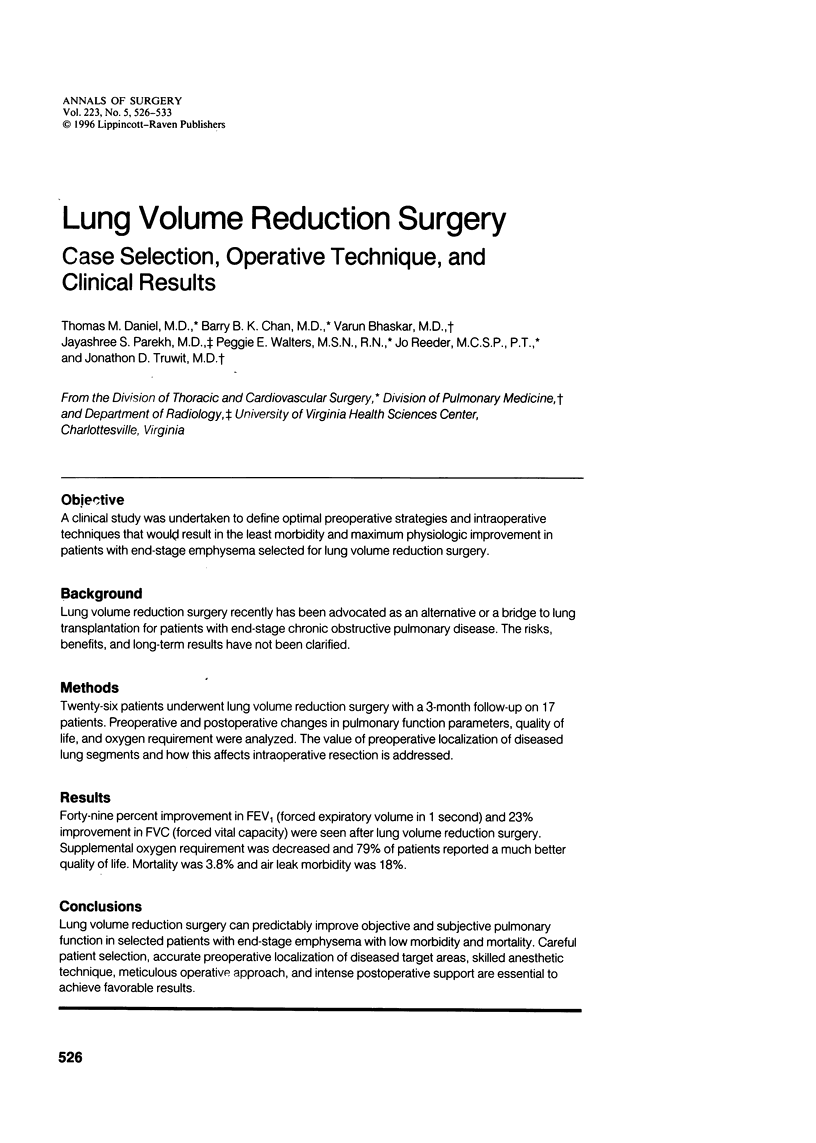
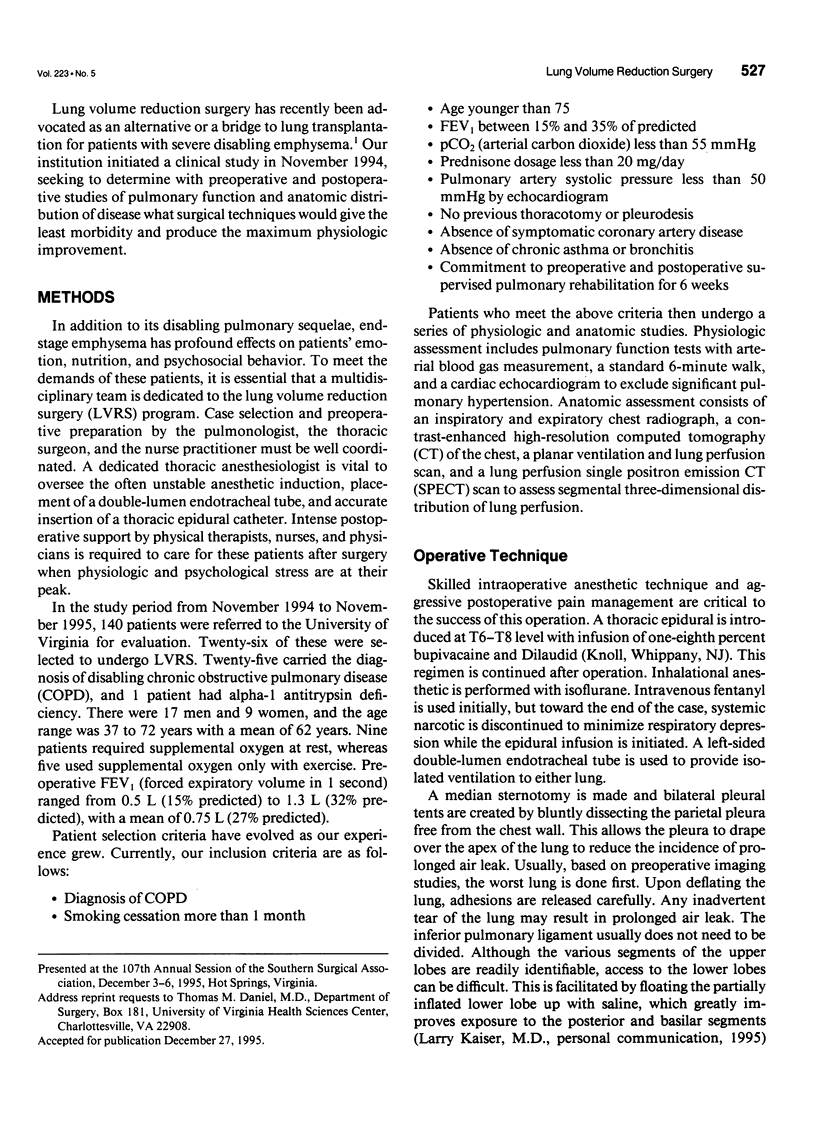
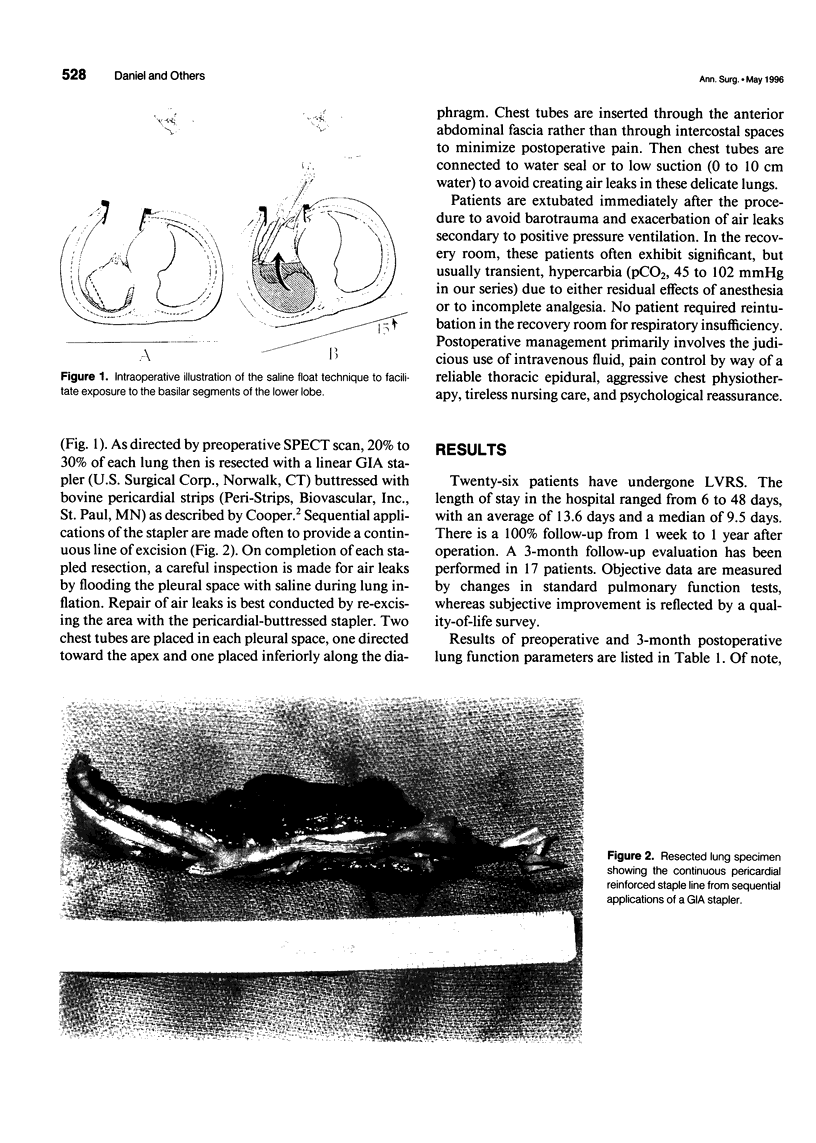
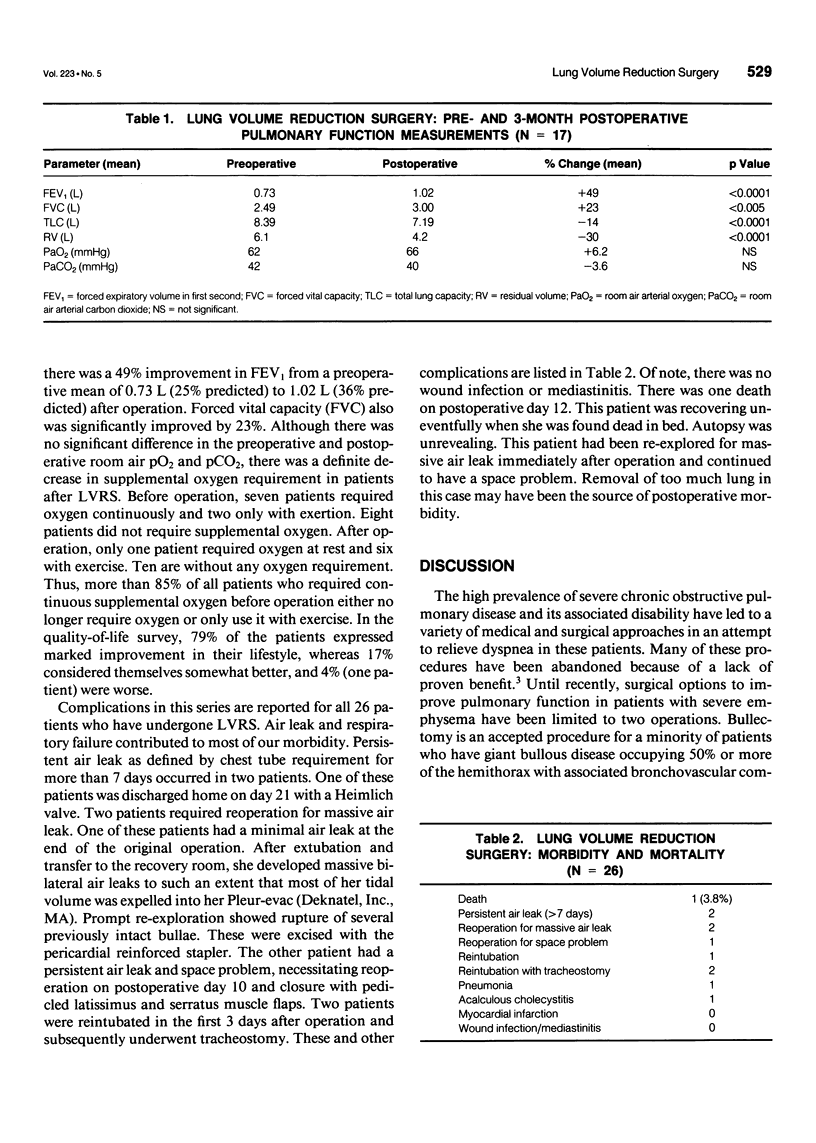

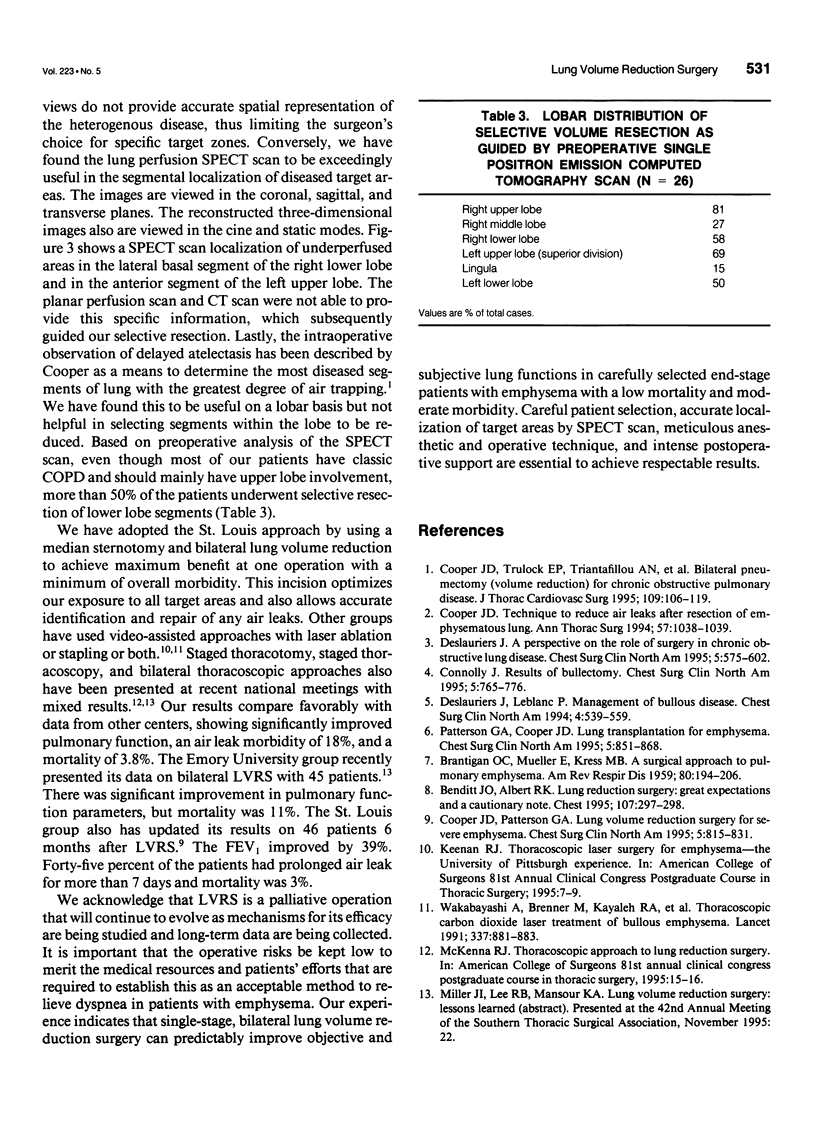
Images in this article
Selected References
These references are in PubMed. This may not be the complete list of references from this article.
- BRANTIGAN O. C., MUELLER E., KRESS M. B. A surgical approach to pulmonary emphysema. Am Rev Respir Dis. 1959 Jul;80(1 Pt 2):194–206. doi: 10.1164/arrd.1959.80.1P2.194. [DOI] [PubMed] [Google Scholar]
- Benditt J. O., Albert R. K. Lung reduction surgery. Great expectations and a cautionary note. Chest. 1995 Feb;107(2):297–298. doi: 10.1378/chest.107.2.297. [DOI] [PubMed] [Google Scholar]
- Connolly J. E. Results of bullectomy. Chest Surg Clin N Am. 1995 Nov;5(4):765–776. [PubMed] [Google Scholar]
- Cooper J. D., Patterson G. A. Lung-volume reduction surgery for severe emphysema. Chest Surg Clin N Am. 1995 Nov;5(4):815–831. [PubMed] [Google Scholar]
- Cooper J. D. Technique to reduce air leaks after resection of emphysematous lung. Ann Thorac Surg. 1994 Apr;57(4):1038–1039. [PubMed] [Google Scholar]
- Cooper J. D., Trulock E. P., Triantafillou A. N., Patterson G. A., Pohl M. S., Deloney P. A., Sundaresan R. S., Roper C. L. Bilateral pneumectomy (volume reduction) for chronic obstructive pulmonary disease. J Thorac Cardiovasc Surg. 1995 Jan;109(1):106–119. doi: 10.1016/S0022-5223(95)70426-4. [DOI] [PubMed] [Google Scholar]
- Deslauriers J. A perspective on the role of surgery in chronic obstructive lung disease. Chest Surg Clin N Am. 1995 Nov;5(4):575–602. [PubMed] [Google Scholar]
- Deslauriers J., Leblanc P. Management of bullous disease. Chest Surg Clin N Am. 1994 Aug;4(3):539–559. [PubMed] [Google Scholar]
- Patterson G. A., Cooper J. D. Lung transplantation for emphysema. Chest Surg Clin N Am. 1995 Nov;5(4):851–868. [PubMed] [Google Scholar]
- Wakabayashi A., Brenner M., Kayaleh R. A., Berns M. W., Barker S. J., Rice S. J., Tadir Y., Della Bella L., Wilson A. F. Thoracoscopic carbon dioxide laser treatment of bullous emphysema. Lancet. 1991 Apr 13;337(8746):881–883. doi: 10.1016/0140-6736(91)90206-5. [DOI] [PubMed] [Google Scholar]




